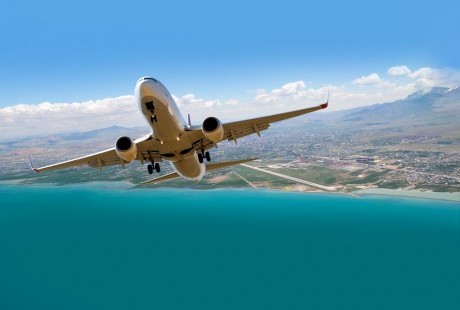A Round-up of the latest Airline News
07/19/2017
Passenger has red face at Beijing Airport
‘Too heavy’ airplane causes problems for Qantas
In an unusual development, forty passengers were forced to leave a Qantas Sydney-Perth flight on 12th June, due to the aircraft being ‘too heavy.'
Scheduled to arrive in Perth at 7.40pm, the delayed plane took off, minus the unlucky forty customers. Qantas issued a statement that the passengers were placed on a later flight.It appears that the problem originated with the fuel pump.In most cases, the issue of overweight planes arises when too much luggage is loaded onto the aircraft. The removal of passengers from planes, for this reason, is rare.Qantas has an outstanding record in Customer Care, so the passengers were in safe hands.
Passenger has red face at Beijing Airport
Few things are likely to annoy cabin crew more than a passenger doing something, right after being told not to do it. And this is just what occurred aboard a Xiamen Airlines flight on the ground, at Beijing Capital International Airport this week.Right after being told not to push the lever that deploys the emergency chute, a female passenger did just that. Reports from the plane suggest that an announcement had just been made not to touch the lever.
We are not sure what happened to the passenger, but if she is allowed to fly with Xiamen again, it sure won’t be in the emergency exit seat !.In all seriousness though, we recommend that airline passengers strictly follow all safety regulations while on board an airplane.
Aircraft Manufacturing Boom could be on the cards
Aircraft manufacturers were jumping for joy this week with the news that in the next twenty years there will be 35,000 larger passenger aircraft in the skies. Larger aircraft are defined as over 100 seats.
What is driving the growth?
Well, projections show that passenger traffic will grow by 4.4% per year, which will need around 35,000 new passenger planes plus freight liners.Apparently, old airliners will need replacing as they are less fuel efficient, but an impressive 60% will be extra aircraft.
Air flights were once luxury items, taken infrequently. Now that is not so.
Emerging markets are leading the growth of air flights in China, Latin America, and Asia.Since Emerging markets account for 6.4 billion of the world’s population, this is a massive market.It is anticipated that spending on air flights will double, and 41% of new aircraft deliveries will be in these regions. The percentage of people defined as middle class will, likewise, increase. New markets will be the economic powerhouse of the future Aviation market.
The economic impact, regarding job creation, is also impressive.530,000 pilots will be required, as well as 550,000 maintenance engineers. Airbus has more than trebled its training centers in response to plans.It goes without saying that employment opportunities for cabin crew and staff on the ground will be boosted enormously by such big increases in air flights. Added to this is the expected Filip from industry liberalization and new routes.
Industry liberalization basically means the push towards more open sky agreements. Open sky agreements allow airlines to use the air space of other countries. In example; the United States has such an open sky agreement with many governments which have meant that airlines like Norwegian can fly to U.S. Destinations.Nations without open sky agreements usually try to protect national carriers or other favored airlines. The effect of this policy is to keep airfares artificially high and stifle competition.
New Routes appear due to rising demand, primarily in the Emerging Markets.There will also be scope for new airports as virgin regions open up. It is noticeable that new route announcements in recent times focus heavily on routes in China, Asia, and Latin America.New routes also bolster the number of first-time flyers which is a key area of growth. The numbers of people in proximity to an airport and the numbers of people with the money and incentive to fly are expanding massively.
More routes and more competition means cheaper air flights and more choice. These are developments even the most cynical observer can applaud.The future for the aviation industry is looking great at the moment !.




